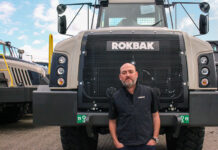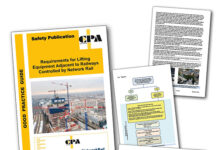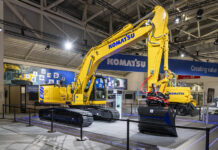Matthew Bailey, divisional manager for inspection and certification at HCL Safety, explores what those working at height, and those responsible for their safety, need to be aware of
MAKE no mistake, working at height has many potential risks. It is, after all, consistently the leading cause of workplace fatalities (according to HSE statistics). It therefore goes without saying that in poor weather conditions, extra precautions need to be taken.
Whether it be high winds, ice, snow, heavy rains, thunder and lightning, or even dew (and let’s face it, in the UK we can get four seasons in one day!), working environments can be a major contributing factor to the overall potential risk of working at height.
Good preparation begins with quality training
While thorough preparation should always be a fundamental component of any robust fall protection regime, it’s particularly pertinent when faced with poor weather. Has the operative tasked with working at height been properly trained? Are they able to accurately assess what risks are present and how best to act upon them? Risk assessments and safety methods can help govern risks and safety, but ultimately, quality work at height training helps provide end-users with the knowledge, confidence and competence to take a safety-first approach.
Great training is so much more than showing someone how to properly put on a harness. It should implement a holistic approach, covering both theory and practical, including comprehensive risk assessment processes, the technical aspects of working at height and additional emergency considerations. An invaluable by-product of quality training is improved confidence, both in knowing the limitations of the equipment and how to use it properly, and in making the right decisions while working at height. This confidence and competence are vital when working at height in poor weather.
Before any work at height begins, all necessary risk assessments and safety methods should be in place. This documentation should cover all potential safety risks and, if circumstances change (such as the weather), a dynamic risk assessment should be completed. With all of this in place, all equipment should undergo thorough pre-checks. Companies with employees that work at height can employ an external company to come in and check PPE and systems. Some will train people within the company to check equipment themselves. Either way, proper checks need to have been done.
What to look out for in windy conditions
Typically, the higher you go, the more exposed you are to strong winds. While strong winds can have an impact on the user – increasing the risk that they may lose their footing, for example – they can also have an adverse effect on the height safety system itself.
Wind may, for instance, cause the height safety system to oscillate. This occurs when the safety system rotates on itself, causing the lifeline to lose tension. If this happens and a fall occurs, the operative may fall further than expected.
High winds also increase the potential for flying objects, which could hit the operative or damage the system. It is the obligation of those responsible for the safety of the operative and/or the work environment to make sure that it’s safe to work in. If flying objects are a possibility, then necessary steps should be taken to remove the risk and thoroughly check whether the height safety system is fully functional and safe to use.
Winds may become so severe that work must be suspended. Safety always comes first, and this decision can be made by the person actually working at height. This is where quality training comes into its own as the operative will have the necessary knowledge, expertise and confidence to make the right decision.
Beware of ice and snow
As above, reducing the risk of slips, trips and falls in ice, frost or snow relies upon proper preparation and assessment. In the event of snow, all ladders and walkways should be cleared to reduce the risk of slips, trips and falls. Particularly heavy snow can also cause height safety systems to become damaged or deploy. If this occurs, steps should be taken to ensure the system returns to being fully operational and safe to use before work continues.
Proper preparation also includes the initial specification and installation of quality PPE and safety systems. It’s important that the fall protection system being used can withstand the conditions it will be exposed to, so consider the materials that the product has been manufactured from and how long these are designed to last for in the given environment.
Regular servicing and inspection of height safety systems is crucial. Systems should be checked at suitable intervals, or every 12 months, depending on frequency of use and the conditions the equipment is exposed to.
While regular inspection and servicing will help ensure you’re compliant with Work at Height Regulations and European Standard EN 365, it can also be a cost-effective alternative to replacing the product for new.
Thunder and lightning
Those working at height and those responsible for safety on site should always have a close eye on the weather, particularly if thunder and lightning is likely. Quite often, those working at height will be the highest object in the vicinity and therefore more susceptible to being struck by lightning. If there is evidence of thunder and lightning in the area, the operative should cease working as quickly and safely as possible.
If in doubt, remove the risk
First and foremost, safe working at height (especially in poor weather) should always follow the hierarchy of risk. If in doubt, pause the work and eliminate the risk. Secondly, an operative should only be tasked with working at height if they have received thorough, quality training.
This will help ensure that they are well-prepared to manage potential risk in poor weather conditions.
The initial specification of high-quality PPE and safety at height systems are both important factors in a robust fall protection regime.
Sophisticated engineering and high-grade materials mean they will not depreciate as quickly as other lower quality alternatives – especially in harsh conditions. And finally, this equipment (dependent on conditions and frequency of use) should undergo regular servicing and inspection.
Fall protection equipment is not something that you can simply install and forget about. Look after your equipment and it will help look after you.













